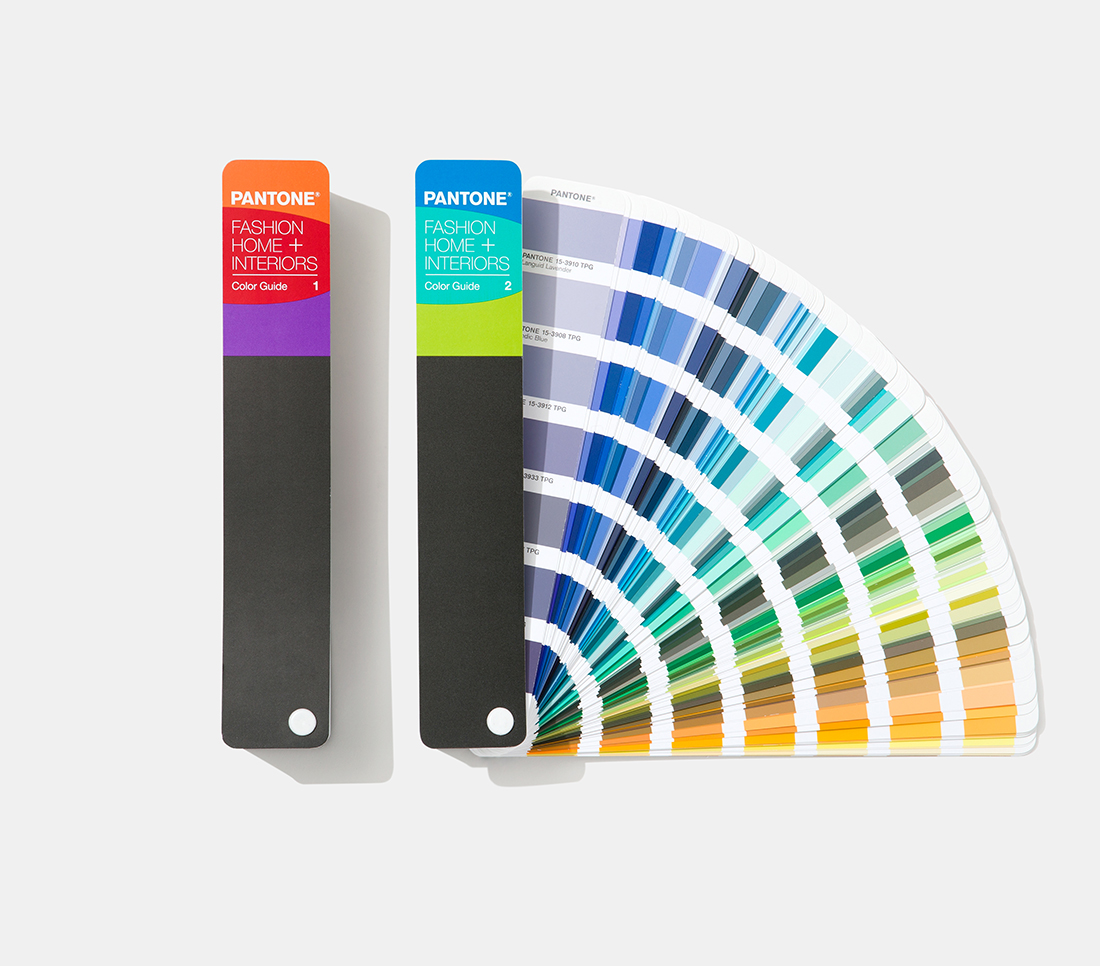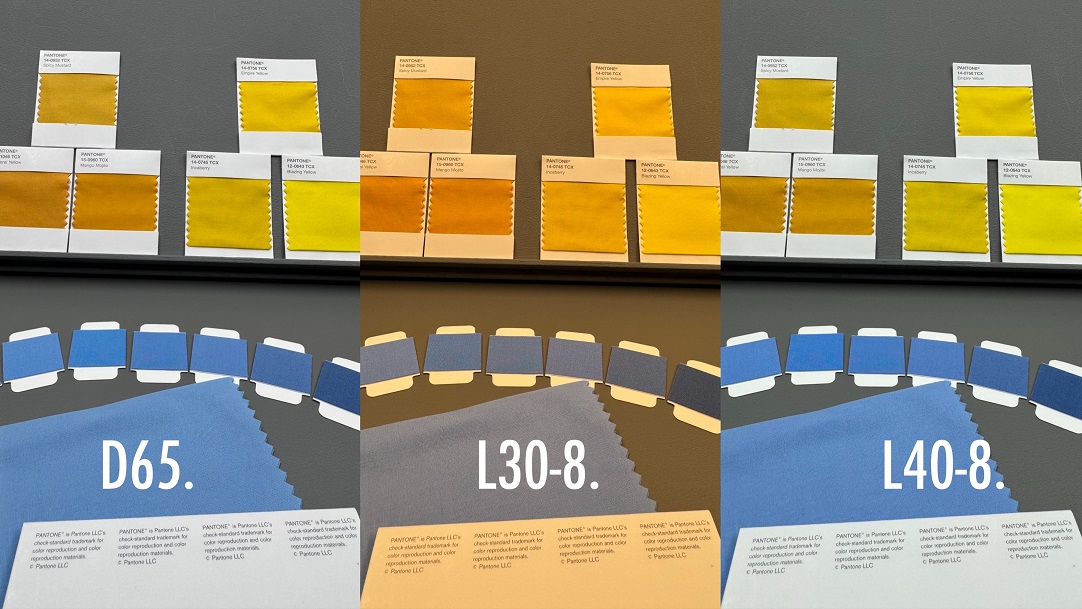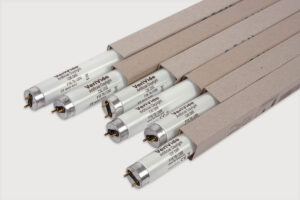Many fashion buyers and fashion designers are using out of date or older Pantone products with compromised performance and missing colours. This can lead to mistakes, delays and dampened creativity. In order to help mitigate the cost of replacing colour standards for brands, VeriVide’s team is offering a trade-in discount on selected FHI products. Scroll to the bottom of this article to find out more about this deal.
Why to update your colour standards
Pantone products have been a vital tool for textile buyers and designers for years. They provide inspiration and allow consistency and agreement in the supply chain when used as a colour standard. A major concern for designers is that not upgrading or updating Pantone colour standards means they are missing out on colours that competitors are already utilising to shape future trends. In terms of colour choice, more is more.
Some designers who have recently ordered an FHI Color Guide have benefited from the 315 newest market-relevant colours which they did not previously have at their disposal. They now have the right tools to be able to design the next star in their collection.
During our Colour Consultancy and Colour Training Courses, we have seen multiple Color Guides adulterated through age and damage. There are a number of issues to look out for but, ultimately, they all affect consistency, accuracy and communication for designers, buyers and their suppliers. Increased lead times, time to market and less faithfully rendered designs are all endured by clients with older Pantone standards.
Pantone recommends that you replace your colour standards every 12-18 months, with many designers only budgeting to change them every three to five years. While this is a significant investment, colour is a vital resource for designers, and when the supply chain has well-maintained and updated colour standards, rejections and time to market is greatly improved. The updated standards pay for themselves many times over.
Image: Pantone FHI Color Guides
Colours Cultivate Creativity
Designers are constantly asking for more and more colours. If you do not regularly update Pantone standards, not only can your results be affected by damage and age, but you are also missing out on all 2,625 of Pantone’s Fashion, Home & Interiors colours, including the 315 newest market-relevant colours.
Having updated colour standards means you are giving your designers the best chance in the race to design next season’s star product. A full complement of Pantone standards aids the creation of colour palettes and communication between supplier and brand.
Ensuring supplier colour standards are updated is essential to colour communication. Our colour courses have revealed that buyers are often specifying a colour and their suppliers are requesting they change the colour as their standards do not include it.
Designers and buyers should not be limited by suppliers not updating Pantone colour guides. It is important that, as part of your supplier audits, updated Pantone guides are included as part of the visual and colour assessment stage of your audits.
Return your old Pantone FHI Books and get Trade In discount off the new FHI Range
What factors can affect Pantone FHI product performance?
There are many factors that can affect the performance of Pantone products, which we have gone into below:
1. Day to day use
Even if you clean your hands before use, the natural oils on your hands can remove pigment or discolour fabric and paper. Additionally, any moisture in your hands can accelerate the ageing process.
To help mitigate these factors, ensure that you wash and thoroughly dry your hands before using Pantone products. Avoid touching the fabric and the pages unless absolutely necessary.
2. Atmospheric contaminants
Pages rubbing together can scratch the pages and remove pigment, through atmospheric dust and grit. Keep your Pantone books stored in a clean cupboard.
This same grit and atmospheric dust can similarly affect fabric Pantone standards.
Storing standards in protective cases and folders is one way to reduce the effect of pages rubbing together. However, pages may still be damaged by normal use.
Garment factories and sourcing offices often suffer from poor storage of Pantone colour products, however UK head offices can also be guilty.
3. Exposure to light
When pages are exposed to light, the colours can fade, in much the same way as the textiles you produce.
Using a protective case and storing your Pantone standards somewhere dark and dry can help improve their longevity.
4. Paper yellowing
As paper ages, it becomes gradually more yellow. This yellowing effect of ageing affects the colours, making them poor representations of the original standards.
By replacing your Pantone standards regularly, you will save time to market, shipping costs, supply chain efficiency and ensure that designs are faithfully replicated in finished products.
What happens if my Pantone FHI product is damaged?
- If your consumer doesn’t get the colour the colour you intended, product sales performance can be affected. A star product can turn into a dog.
- If two Pantone products in the supply chain do not match, miscommunication can occur. Suppliers and designers can disagree on decisions, leading to frustration and expensive second third and fourth re-designs.
- Loss of agility – Time to market is increased as disagreements over pass-fail/ sample colours means that sign off is delayed.
- If two to three signoffs are rejected due to an out of date Pantone book, this makes a replacement Color Guide or Cotton Chip Set value for money in shipping costs alone. If time savings are factored in, updated Pantone standards become a must have.
Not only do you need to keep your own Pantone standards updated, but you also need to ensure that the standards of everyone in your supply chain are updated too. If your supplier has damaged Pantone books or guides, it is almost impossible to achieve consistent agreement.
In an environment where brands are trying to do all they can to increase sales through marketing and in-store experience, should controlling colour not be an integral part of their strategy?
Color of the year 2020 – Classic Blue
In December 2019, Pantone announced Classic Blue as Color of the Year 2020. If your Pantone books or guides aren’t up to date, you run the risk of not having this important shade at your disposal.
The chances are that your clients/customers are looking for designs using Classic Blue, and if you can’t deliver them, they will go elsewhere.
New Year New Hue(s) – Buy now for great savings on FHI products
We know that regularly updating Pantone books and guides can prove costly.
To help soften the financial impact, VeriVide is offering huge discounts on Pantone FHI products when you trade in your out of date standards.
*Trade in any aforementioned FHI product for £150 off
**Trade in any aforementioned FHI product for £250 off
To trade in your product, either send it back to VeriVide and we will recycle accordingly or send an image of the destroyed product. VeriVide will then provide a credit note against your account or provide you with a discount code.
If you have older standards that are not mentioned and want to trade them in for a discount on new products, get in touch and we will see what we can do. Email pantone@verivide.com
Discover the updated Pantone FHI range here to see what you’re missing.











